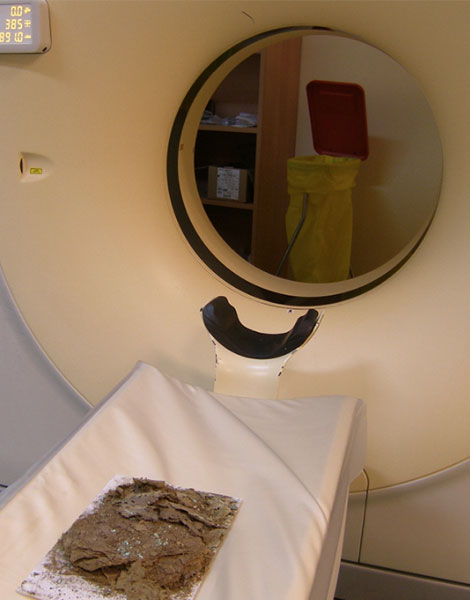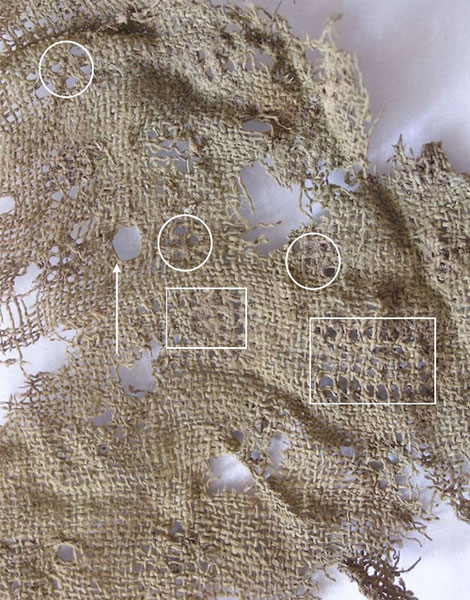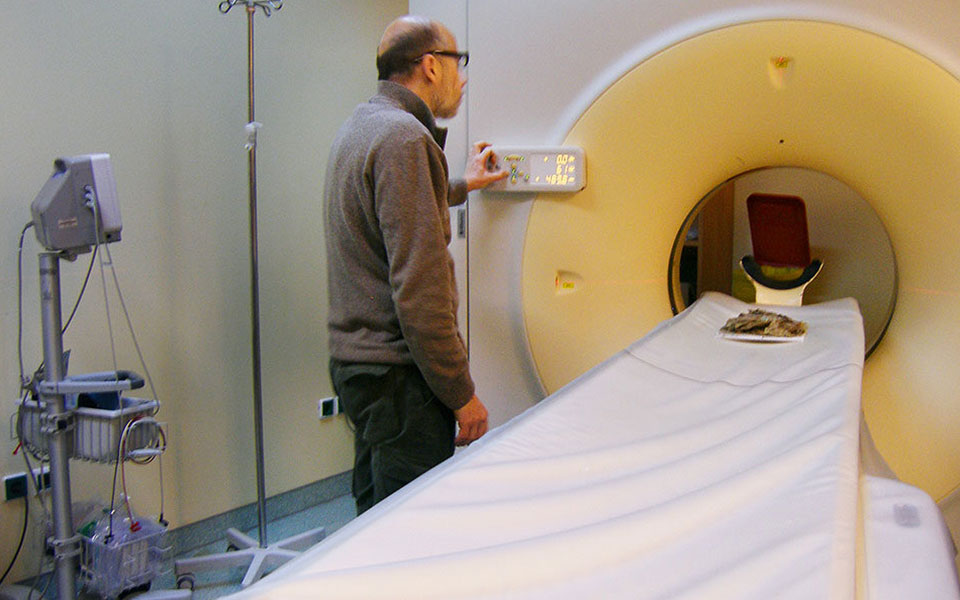Among the multitude of archaeological finds in Greece, there are some that were not considered particularly important until recently: chief among these are excavated textiles. Very few have been found, rarely in good condition, and they are not very informative. In addition, they’re exclusively found in funerary contexts, as the copper urns they were buried in protected them over the centuries.
Yet one particular textile, a linen funerary shroud dating to the 5th century BC that was excavated in the 1980s and stored in the warehouses of the National Archaeological Museum, can provide useful evidence about its time.
“In particular, this is a folded mass of different types of linen textiles, that seem to have traces of embroidery or other decorations made with a different thread, perhaps wool, that has not survived,” Dr. Christina Margariti, Head of the Applied Research Department at Directorate of Conservation at the Hellenic Ministry of Culture, tells Kathimerini.

© Directorate of Conservation of Ancient and Modern Monuments / Hellenic Ministry of Culture and Sports, Christina Margariti

© Directorate of Conservation of Ancient and Modern Monuments / Hellenic Ministry of Culture and Sports, Christina Margariti
The finding was discovered by archaeologist Elena Papastavrou in a rescue excavation of the 26th Ephorate of Prehistoric and Classical Antiquities, on Thivon Street in Athens, and had been used to wrap the bones of the deceased after cremation before being placed in a copper urn. “This is the only embroidered textile from the 5th century BC that we have in Greece,” she explains. “Other textiles from that time, with traces of embroidery, come from a clandestine excavation in 1957 and are currently housed at the Victoria & Albert Museum in London.”
The importance of the textile finding is not only in its quantity and its good condition, but also in its decorative features. Composed of organic and geometric motifs, its existence alone is of incredible value as funerary textiles are rarely decorated. “It is also important,” continues the conservationist, “that it was discovered folded, in exactly the same way it was placed in the urn. This may not have any archaeological interest, but it may also mean something.”
Technology can contribute to answering these, and other similar questions in many ways. For instance, the textile was scanned in a CT scanner to determine its precise content. There is also virtual unfolding, which ensures no damage to the artifact. The conservation study approved yesterday by the Central Archaeological Council (CAC) will follow a middle ground, as it will make optimal use of digital tools but also the careful, natural unfolding of loose sections of the textile.

© Directorate of Conservation of Ancient and Modern Monuments / Hellenic Ministry of Culture and Sports, Christina Margariti
Renewed interest
The story of this reappearance confirms a renewed interest for archaeological findings in Greece and across the European Union, as evidenced by the creation of the EU’s Euroweb program, with the participation of the Hellenic Ministry of Culture. In fact, two years ago when Christina Margariti informed the Ephorate of Antiquities of Piraeus and Islands of her research regarding the textile, the Head of the Ephorate’s Department of Conservation, Aikaterini Panagopoulou, identified several more, even better preserved textiles that had been transferred to the Archaeological Museum of Piraeus; they will soon be united with the one from the National Archaeological Museum.
Dr Margariti knew of the artifact’s existence from her years as a doctoral candidate in the preservation of excavation textiles, and when she began her diligent research, she realized that it had been placed in the warehouses of the National Archaeological Museum for preservation by someone specializing in textile conservation, which would not have been possible in the 1980s. Archaeologist Elena Papastavrou helped pinpoint its precise location. “She came to the warehouses herself,” she tells us, “and she found it because she remembered it.”
This article was first published in Greek at kathimerini.gr.












